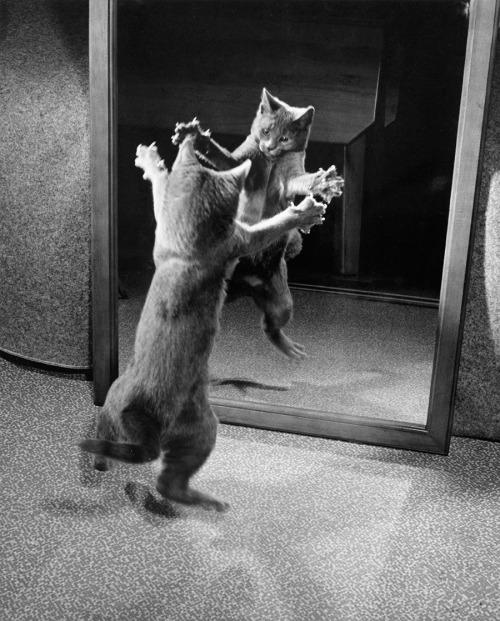--------
This is from the "Tree of Life Blog" of Jonathan Eisen, an evolutionary biologist and Open Access advocate at the University of California, Davis. For short updates, follow me on Twitter.
--------
Adam's Blogroll: click through to the author's blog
Posted by in cats, domestic animals, domestication
Dr. Jennifer Gardy provided a step-by-step guide to making science out of cat poop on Twitter, which was subsequently catalogued by our own Michele Banks, guru of Science Cats and Science Scarves (yes, this is a subtle reference to Dr. Gardy wearing an Artologica scarf in the photo series – now rendered unsubtler).
Posted by in cats, Jennifer Gardy, Kitty Biome, Michele Banks, science caturday, storify
 Our Chief Cat Wrangler is busy sharing her art with the world. So, today, you are stuck with me and a joke that occured to me in the middle of the night. Yes, I wrtie jokes about latinized scientific names for Science Cats.
Our Chief Cat Wrangler is busy sharing her art with the world. So, today, you are stuck with me and a joke that occured to me in the middle of the night. Yes, I wrtie jokes about latinized scientific names for Science Cats.
Posted by in cats, felis catus, science caturday
For once, you should listen to the dog.
Posted by in cats, dogs, science caturday, sofa
Posted by in animal shelters, cats, kitties, KittyBiome, microbiomes


Posted by in cats, cheetahs, Holly Ganz, kickstarter, KittyBiome

With claws bared, a kitten attacks its own mirrored reflection, 1964. Photograph by Walter Chandoha, National Geographic Creative
A team of scientists from University College London report that they have developed a tough new self-cleaning paint. In a paper published in this week’s issue of Science, the researchers say the paint, made from coated titanium dioxide nanoparticles, is not only extremely repellent to water, but won’t get ruined even if it’s scratched or exposed to oil. Because it is so hard-wearing, it could be used for a wide range of applications, from clothing to cars. Reached for comment, our Caturday correspondent Professor Kibble said, “Big deal. I haz been self-cleaning since I was a itty-bitty kitty. I iz also extreemly rezistant to water (see Fig. 1 above).”
Posted by in cats, caturday, materials science, science caturday
Countless disasters have shown that pet owners can quickly become a vulnerable population in the face of a natural disaster or emergency. Should you stay at home with your pet? Should you take your pet with you? Where can you go with your pet? Should you leave your pet behind?
It is extremely important for the safety of pet owners and pets, to have a plan for caring for pets during a disaster. The American Society for the Prevention of Cruelty to Animals (ASPCA) helped provide emergency shelter and care for more than 8,500 animals displaced by Hurricane Katrina. Following Hurricane Sandy, the ASPCA assisted more than 30,000 pets in New York and New Jersey. It is estimated that 30 to 40 percent of the people who refused to leave their homes after Hurricane Katrina were staying to care for their pets, and over 600,000 pets were killed or left without shelter. If you evacuate your home, take your pets. Plan ahead and do not leave them behind. Pets most likely cannot survive on their own, and if by some remote chance they do, you may not be able to find them when you return.
 With pets, the best way to protect your furry, scaly, or slimy family member is to plan ahead. They can’t do it for themselves and so it is up to you to have an emergency plan in place for your pets.
With pets, the best way to protect your furry, scaly, or slimy family member is to plan ahead. They can’t do it for themselves and so it is up to you to have an emergency plan in place for your pets.
In many emergency situations, people will risk their lives to stay behind with their pet. If you think it through and prepare in advance, you will know what to do in order to protect yourself, your family, and your pets.
Things you can do:
1) Pet-Friendly Shelters. Not all shelters accept pets. Before an emergency, make sure you figure out where you will go that is safe for you and your pet. Find out which hotels are pet-friendly, and make sure you look into hotels in your community (for short-term needs) and hotels out-of-town that are pet-friendly in case you have to evacuate. Contact your vet for a list of boarding kennels and facilities that will be open to taking pets in an emergency. Does your local animal shelter provide emergency shelter or foster care for pets? Find out!
2) Designated Caregivers. There are a few reasons why it is a good idea to identify friends or relatives that will be willing to care for your pet if you are unable to do so. You may not be home when an emergency occurs, so line up a neighbor or friend that can check on and care for your pets. Also, ask friends and relatives outside of your immediate area if they would be willing to take in your pet should you have to evacuate.
 3) Emergency Kit. Before you find yourself in an emergency situation, pack a pet emergency kit so that you are ready to care for your pet if a disaster hits. Pack 3-7 days worth of pet food (dry or canned), bottled water, medications, veterinary records, a pet carrier, litter and disposable litter trays, manual can opener, food dishes, first aid kit, and other supplies with you in case they’re not available later. For a complete list, see our Ready Wrigley pet emergency kit supply list.
3) Emergency Kit. Before you find yourself in an emergency situation, pack a pet emergency kit so that you are ready to care for your pet if a disaster hits. Pack 3-7 days worth of pet food (dry or canned), bottled water, medications, veterinary records, a pet carrier, litter and disposable litter trays, manual can opener, food dishes, first aid kit, and other supplies with you in case they’re not available later. For a complete list, see our Ready Wrigley pet emergency kit supply list.
4) Vet records and identification. Keep paper copies of your pet’s vet records in a safe and accessible place. Make sure identification tags are up-to-date and securely fastened to your pet’s collar. Pet-friendly shelters, kennels, or boarding facilities that you arrange ahead of time will need to be able to identify your pet and know your pet’s medical history.
5) Microchip your pet. If you are separated, this is the best and easiest way to be reunited with your pet! A typical microchip costs around $45, but shelters and organizations often hold events where the cost is much cheaper.
6) Download the Pet First Aid App from the Red Cross, or the ASPCA app.
 7) ASPCA sticker. Get a free pet emergency alert sticker for your home. The ASPCA stickers are used to make sure rescue workers know that you have pets inside your home, the types of pets, and your vet information.
7) ASPCA sticker. Get a free pet emergency alert sticker for your home. The ASPCA stickers are used to make sure rescue workers know that you have pets inside your home, the types of pets, and your vet information.
Pets rely on you to care for them every day and you rely on them for comfort and companionship. Don’t let an emergency or disaster prevent you from caring for or separate you from your pets. Have a plan, get a kit, and be prepared for your pet’s safety as well as your own.
Posted by in ASPCA, cats, disaster, dogs, General, pets, Preparedness, Preparedness Month, Response
Discover Magazine’s September print edition featured an infographic called “20 Things You Didn’t Know About Cats.” Felines seem to lead elusive, mysterious lives. Fortunately, the citizen science project Cat Tracker allows you to track your cat beyond what we can …
The post Coop’s Citizen Sci Scoop: The nine simultaneous lives of cats appeared first on PLOS Blogs Network.
Posted by in animal behavior, animal movement, Caren Cooper, Cat Tracker, cats, DIY, Do-It-Yourself, house cat, Technology, Your Wild Life